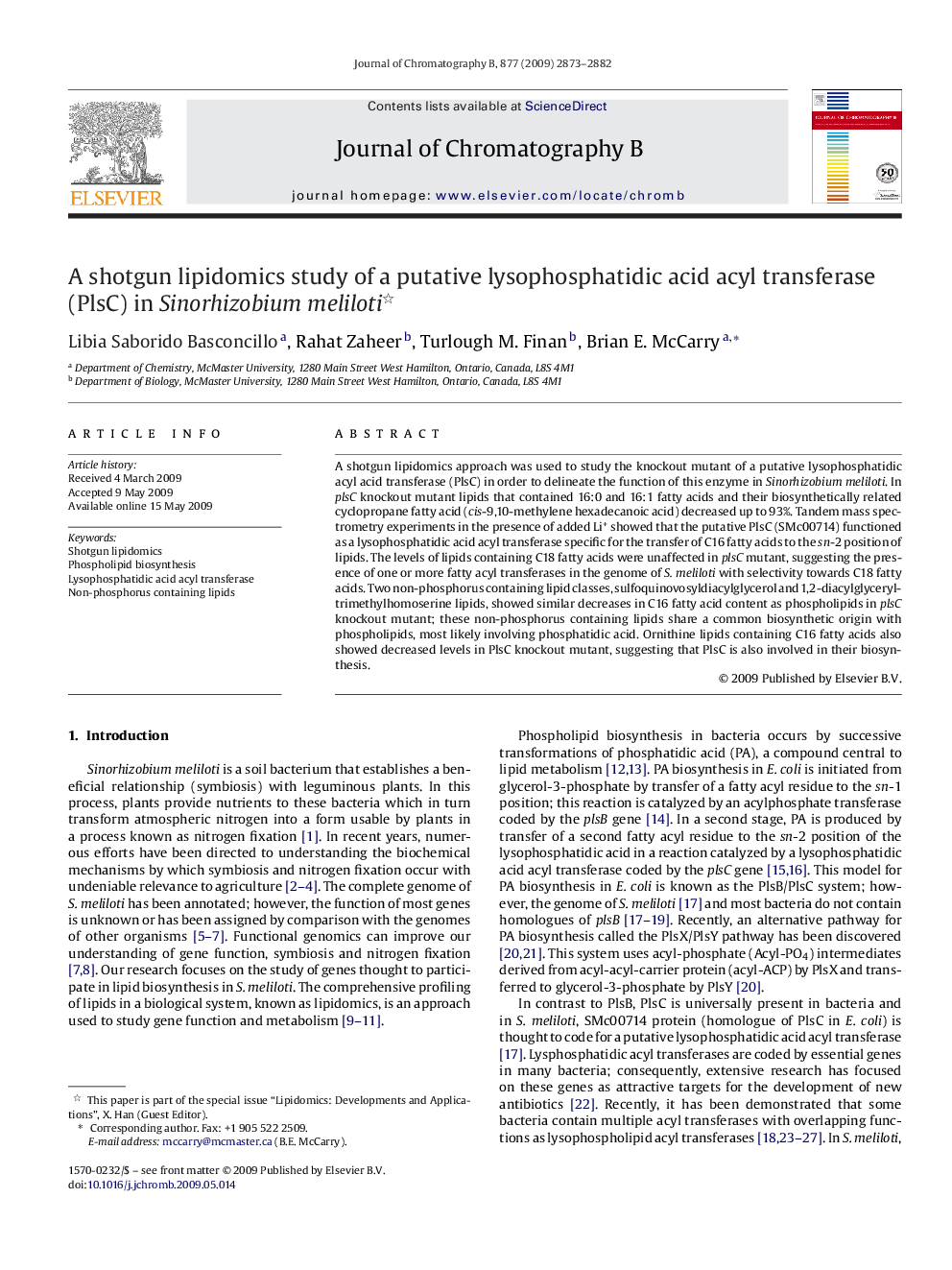| Article ID | Journal | Published Year | Pages | File Type |
|---|---|---|---|---|
| 1214422 | Journal of Chromatography B | 2009 | 10 Pages |
A shotgun lipidomics approach was used to study the knockout mutant of a putative lysophosphatidic acyl acid transferase (PlsC) in order to delineate the function of this enzyme in Sinorhizobium meliloti. In plsC knockout mutant lipids that contained 16:0 and 16:1 fatty acids and their biosynthetically related cyclopropane fatty acid (cis-9,10-methylene hexadecanoic acid) decreased up to 93%. Tandem mass spectrometry experiments in the presence of added Li+ showed that the putative PlsC (SMc00714) functioned as a lysophosphatidic acid acyl transferase specific for the transfer of C16 fatty acids to the sn-2 position of lipids. The levels of lipids containing C18 fatty acids were unaffected in plsC mutant, suggesting the presence of one or more fatty acyl transferases in the genome of S. meliloti with selectivity towards C18 fatty acids. Two non-phosphorus containing lipid classes, sulfoquinovosyldiacylglycerol and 1,2-diacylglyceryl-trimethylhomoserine lipids, showed similar decreases in C16 fatty acid content as phospholipids in plsC knockout mutant; these non-phosphorus containing lipids share a common biosynthetic origin with phospholipids, most likely involving phosphatidic acid. Ornithine lipids containing C16 fatty acids also showed decreased levels in PlsC knockout mutant, suggesting that PlsC is also involved in their biosynthesis.
